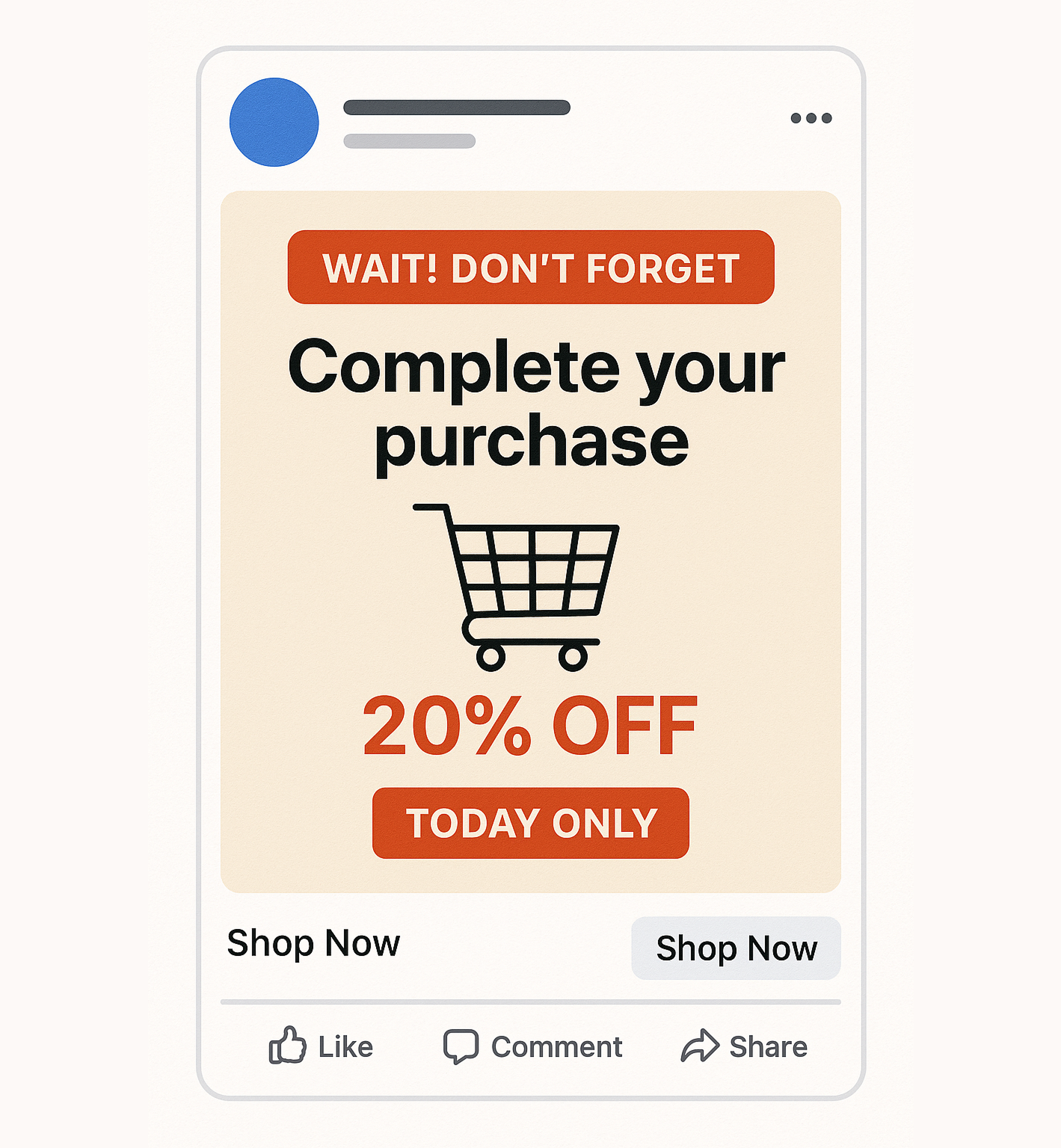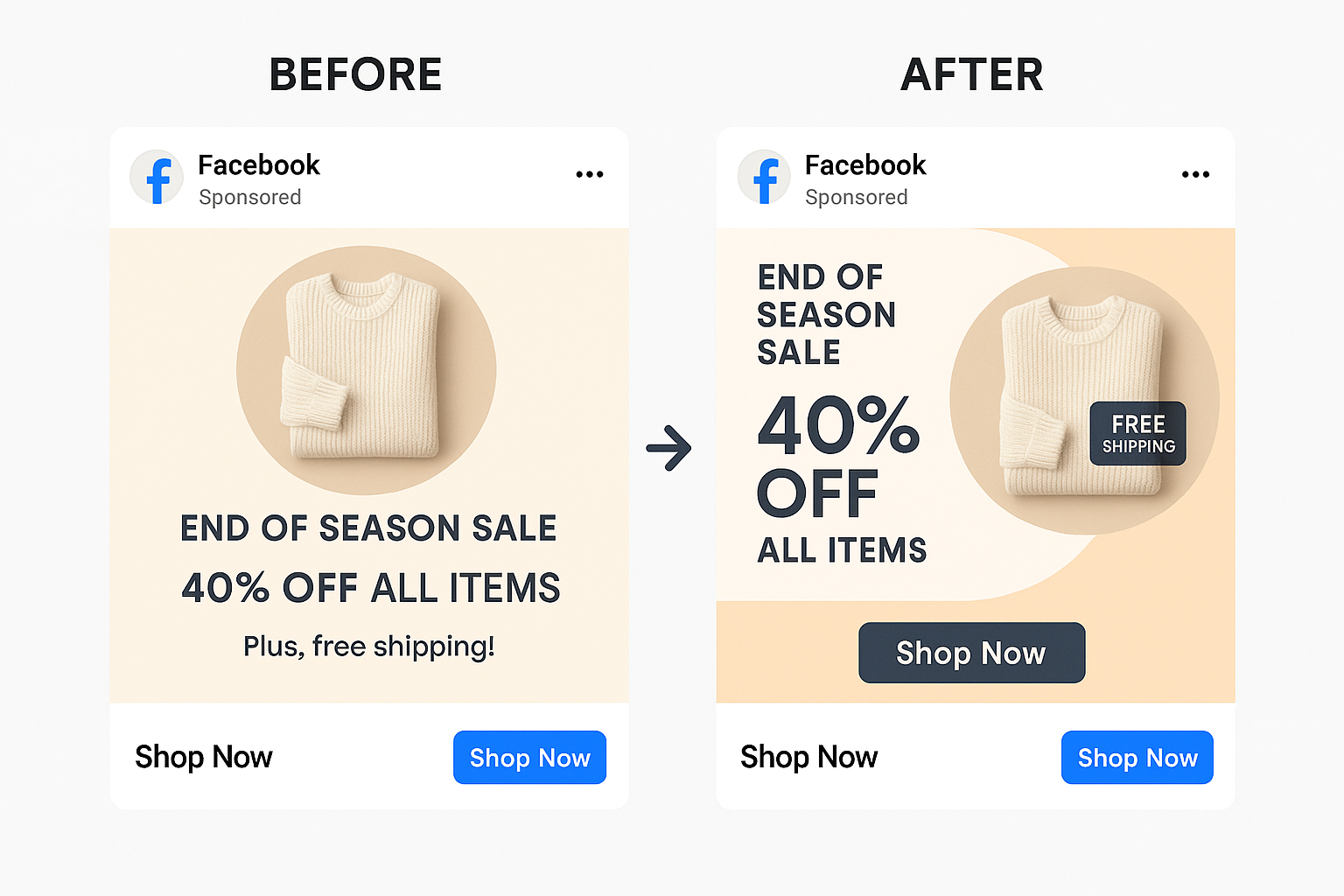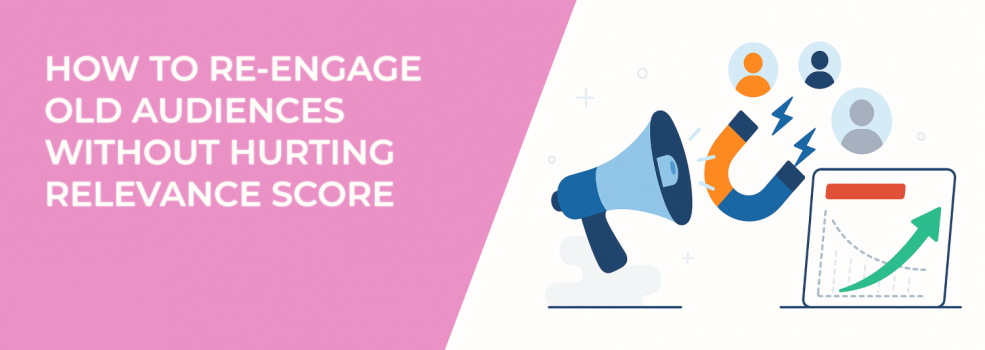When Facebook campaigns start underperforming, many advertisers look to re-engage past audiences. After all, these users already showed interest — they clicked, watched, maybe even added to cart.
But there’s a problem: without a smart strategy, re-engagement campaigns can harm your relevance score. And a low relevance score usually means higher costs and fewer impressions.
The solution isn't to stop re-engaging. It's to re-engage strategically. Here's how to do it without tanking your performance.
Why Relevance Score Still Influences Performance
Meta may have moved away from displaying a single "relevance score," but it still ranks ads based on performance signals: engagement, clicks, hides, time spent, conversions, and user feedback.
If you serve outdated or irrelevant ads to a cold segment of your old audience, those signals go negative. As a result, you pay more to reach fewer people.
For context, if you're seeing delivery issues on older ad sets, this may be why. This breakdown explains what happens when ad sets get stuck or stall in delivery.
1. Segment Cold Audiences by Intent
Not all previous visitors are worth re-engaging equally. Targeting "all website visitors in the past 180 days" can include people who bounced after three seconds. That audience isn't just cold — it's indifferent.
Instead, break old audiences down by recent behavior:
-
Cart abandoners in the past 14–30 days. These are high-intent users who showed interest but didn’t buy.
-
Visitors to pricing or checkout pages. They likely evaluated your offer but didn’t commit. They may just need reassurance.
-
Engaged video viewers or social post interactors. They know your brand, but didn’t take the next step.
-
Long-lapsed leads (90+ days ago). These users might be reachable again, but need to be warmed up gradually.
Treating all these segments the same will dilute your messaging and relevance.
For a step-by-step method on refining audiences by behavior and action, see How to Define a Target Audience for Marketing.
2. Customize Ad Messaging to Past Behavior
Someone who watched 95% of your product demo video isn’t the same as someone who liked an Instagram post three months ago. Your message needs to reflect that.

-
High-intent users (checkout or cart pages): Use urgency or limited-time value offers. These users are close to converting, so reduce friction.
-
Mid-intent users (pricing or product detail views): Share proof points like customer stories, trust badges, guarantees, or FAQs.
-
Low-intent users (social/video viewers): Focus on curiosity-driven messaging or new content angles to reframe your offer.
You're not just reminding them you exist. You're showing them a reason to care now.
3. Refresh Visuals and Formats
Don’t reuse the exact same creative you ran six months ago. Even if the offer still applies, the look needs to change.

Some ways to refresh without rebuilding from scratch:
-
Add motion to static images using subtle animations or transitions. This draws attention even if users have seen the static version before.
-
Change the background or layout slightly. This prevents visual fatigue.
-
Introduce social proof such as review snippets, star ratings, or user testimonials.
-
Switch formats, like using Reels or vertical video instead of standard feed posts.
Curious how to do this quickly using smart tools? This guide on AI Text and Image Generators will help you scale variations fast.
4. Rebuild Engagement Before You Sell
Jumping straight into a sales pitch rarely works on cold audiences. Instead, start with lower-pressure content that invites re-engagement.
Here’s how:
-
Run video views or post engagement campaigns. These build recent interaction history without asking for anything in return. Facebook will then optimize delivery to users most likely to engage.
-
Promote blog posts or tips-based content. This helps reposition your brand as helpful rather than pushy.
-
Use lead magnets like free guides, webinars, or checklists. You're giving value upfront, and collecting leads for deeper nurturing later.
This warm-up phase also provides valuable engagement signals to Facebook, which improves future delivery. This article covers more ways to build engagement strategically.
5. Control Frequency and Set Proper Exclusions
Flooding your old audience with aggressive retargeting can backfire quickly. Ad fatigue isn't just about visuals — it's about timing.
Make sure you:
-
Set frequency caps. Aim for 1–2 impressions per user per week for colder segments.
-
Exclude recent converters and engagers. Don’t waste budget reminding someone who just clicked.
-
Rotate creatives often. Even small tweaks can prevent drop-off in click-through rate (CTR).
Not every cold user needs to be chased repeatedly. If engagement doesn’t rise after several impressions, it may be more effective to suppress that segment temporarily or refresh the creative entirely.
6. Use Lookalike Audiences from Warm Segments
Once you’ve re-engaged part of your old audience successfully, create lookalikes based on:
-
Link clickers,
-
Add-to-cart users,
-
Engaged video viewers,
-
Lead form openers.
These lookalikes often outperform broad interest targeting. They also let you scale while staying close to your best-performing segments.
Want to compare Custom vs. Lookalike strategies in more detail? Here's a breakdown on Custom vs Lookalike Audiences: What Works Best.
Summary: Re-Engagement Without the Penalty
You can re-engage old audiences without hurting your relevance score. But only if you:
-
Segment smartly.
-
Match the message to their last action.
-
Update creatives with intent.
-
Warm up before re-selling.
-
Control frequency and monitor audience burnout.
Getting this right improves CTR, protects your delivery, and reduces wasted spend. If you’re seeing poor results despite re-engagement efforts, take a closer look at your segmentation and messaging strategy. Sometimes it’s not the audience that’s cold — it’s the approach.

